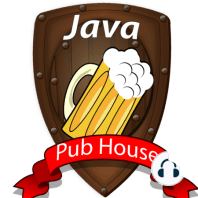43 min listen
Episode 87. Ok, it's time to get Reactive!
FromJava Pub House
ratings:
Length:
74 minutes
Released:
Nov 5, 2019
Format:
Podcast episode
Description
It's that Streaming-new-deal that has been taken over the web world, Reactive! You've heard about it, and maybe even tried to learn it a couple of times but find it confusing? Well, be confused no more since on this episode Bob and I explore the basic foundations of Reactive (and explain what is that makes is so confusing to begin with) But that's not all. We also dive on why is such a "hot" technology and why is the recommended approach on new microservices, even so, we also explore its drawbacks and why we shouldn't rip everything apart to make "reactive" things. Lastly we start exploring one of the "reactive" frameworks with Spring WebFlux, and explore how to "think" about Reactive (and came with the marble track analogy). In all, this episode will shed light on a topic that has been hard to understand, but on which, if done correctly can bring a very large performance gain! FOLLOW US JavaPubHouse on twitter! Where we will be sharing new tech news, and tutorials! We thank DataDogHQ for sponsoring this podcast episode Don't forget to SUBSCRIBE to our cool NewsCast! Java Off Heap Reactive Streams Interfaces Spring Webflux Observer Pattern Reactive Performance Comparison Do you like the episodes? Want more? Help us out! Buy us a beer! And Follow us! @javapubhouse and @fguime and @bobpaulin
Released:
Nov 5, 2019
Format:
Podcast episode
Titles in the series (100)
Episode 21. The JVM Crashed...Now what?!: So you're programming along when suddenly support calls and says that the application just "disappeared", or, the server process is not there anymore, both of them leaving you with a hprof.pid file. You have just witnessed the murder of a Java Virtual... by Java Pub House
